– By Samraddhi Saxena
– Intern IPPCS’21
Abstract
India aims to be one of the fastest-growing markets in terms of drones. On Thursday, August 26, India’s Ministry of Civil Aviation (MoCA) issued a new drone policy that formalises a draft regulation released earlier this summer. Drones have applications in various fields, including transportation, agriculture, defence, law enforcement, surveillance, and emergency response, to name a few. The new Drone Rules 2021 has simplified civil and non-commercial usage of drones. The new Drone Rules 2021 have been a critical improvement towards Drone regulations in India; it has a tourist majority of challenges that will limit the growth of the Indian aviation industry. The new Drone regulation 2021 has been outlined in the liberalized model to ensure user-friendly, easily maintainable, and manageable market practices and the use of drones. Several criteria and clearances have been deleted under the revised guidelines, making drone activities more accessible to civilians. However, specific issues like invasion of data privacy, proper safety protocols etc., remain in the Limelight.
Introduction
The New Drone policy is being seen as a historic achievement for India. In its notification, the Indian government claims that new regulatory rules for usage of drones in India are built on the premise of “trust, self-certification, and monitoring with a minimal scope of intrusion.” It is to be considered a Remarkable development on the regulatory front by the Government of India. In July, just weeks after a drone strike on an Indian Air Force facility in Jammu, the proposed guidelines for the new strategy were announced. Superseding the previous rules released in March 2021, the new rules have a liberalized outlook to them. They not only have ensured user-friendly, more uncomplicated, and simplified medium for Drone regulation but have permitted various core related domains of its application in terms of foreign entity, non-commercial use and licensing policy.
It is evident that this move from a restrictive to a liberalized model is visualised as a step towards making India a’ Drone hub by 2030’. The policy initially set forth approx. Twenty-five forms of security measures have now been reduced to 5 states. This specific change is prima facie an eminent indicator of the liberalized outlook of New Drone rules 2021. This move has been based on instilling confidence among users and boosting the market for drones.
However, notably, the improved Drone rules do carry the scope of future improvements—several arenas hostel to be explored about Drone regulations in India. For example, the geo-fencing, NPNT, real-time tracking beacon has been viewed as a few ‘within consideration’ changes to update the new Drone rules.
New Drone Regulation 2021
The Civil Aviation Requirements (CAR) 2018, published in December 2018, were the first complete document describing the parameters for manufacturing, registering, and flying drones. In March of this year, CAR was replaced by Unmanned Aircraft System (UAS) Rules 2021. In August 2021, the New Rules 2021 returned the previous rules. The New Rules 2021 defines “a drone” as “an aircraft that can operate autonomously or can be operated remotely without a pilot on board.” The application of the New Drone Rules covers all types of people who own, hold, lease, operate, transfer, or maintain a drone in India and all drones that are currently being used over or in India. The application of Aircraft Rule, 1937 has also been excluded in the case of a drone with a maximum all-up weight of more than 500 kilograms. Additionally, the New rules 2021 centres on the Civil use of Drones only.
There exist no notable changes among the drone classification except that the New Rules have done away with the performance-based reclassification of Nano Drones, which is deemed to benefit the industry at large. In addition, the weight limit for drones has been raised from 300kg to 500kg under the new guidelines, which now include big payload-carrying drones and drone taxis. Also, before registering or licencing drones, there is no requirement for a security clearance. Several approvals, including the unique authorization number, the unique prototype identification number, the certificate of conformity, the certificate of maintenance, the operator permissions, the R&D organisation authorization, and remote pilot instructor authorization, have been phased out. Permission fees have also been cut to nominal levels.
Surprisingly, no type of drones, including Nano Drones, has been exempted from obtaining a UIN (Unique Identification Number). Though a one-step, one-time registration system for drone operators should not be too onerous for them, and it would also secure their accountability. The UIN assigned to a drone is to be linked to the manufacturer’s “unique serial number” and the Drone’s flight control module and remote pilot station. However, the New Rules leave it unclear if the unique serial number will be supplied by the manufacturers or by the authorities to each manufacturer.
The government has lifted limitations on drone activities in India, at least for foreign-owned and controlled Indian corporations (“FOCC”). An interactive airspace map featuring green, yellow, and red zones will be featured on the digital sky platform. The 45-kilometre yellow zone around the airport has been reduced to 12 kilometres. Without obtaining permission, drones can be used in the green site and up to 200 feet away from the airport perimeter. In terms of safety, the Rules place the onus on the drone operator to ensure that the operations do not risk the safety and security of any person or property, either directly or indirectly. The carrying of dangerous goods and weaponry, ammunition, and explosives is forbidden (unless following the Aircraft (Carriage of Dangerous Goods) Rules, 2003).
Future Scope
The previous regimes mandated installing a large number of safety mechanisms on all sorts of drones, which was another source of concern for the business. While the New Rules do not precisely specify these safety features, they state that the government has the authority to notify mandatory safety features such as no permission-no take-off hardware (NPNT) and firmware, real-time tracking beacons, and geofencing capability. The technological infrastructure behind it also needs to be operationalised and strengthened by removing the bugs and simplifying the user interface.
Additionally, The DGCA, in conjunction with QCI, should establish standards for operation and imports to verify that drones and drone components imported fulfil the needs of the local sector and comply with public safety guidelines.
Data privacy may also be violated due to violations of spatial privacy that may occur as a result of the use of drones in a densely populated country like India. Therefore, the Drone Rules should include a clause barring trespass or wilful entry onto an individual’s land or airspace to capture any visual image or a sound recording when the plaintiff is engaged in a private, personal, or familial activity that is offensive to a reasonable person. Such provisions should be per Future Data Protection Law in India.
Conclusion
The new Drone regulations 2021 has embarked the country on a journey towards making user-friendly laws regarding Aviation. This move of the Ministry of Civil Aviation has been seen as a significant boost to the aviation industry and future scope expanding domain. Through this Bird’s eye view of what constitutes the significant changes brought with the new Drone regulation 2021, it is inevitable that law still has scope for evolving. Geo-Fencing, NPNT and proper measures ensuring adequate infrastructure and safety protocols would further solidify the drone regulations. The promised changes will further enhance and pave the way for Drone regulations in India.
References
- Bharat Sharma, “India’s New Drone Rules Explained: No Licence Needed to Fly Drones in India” (IndiaTimes August 26, 2021) <https://www.indiatimes.com/explainers/technology/india-drone-rules-explainer-548087.html> accessed September 14, 2021.
- Pranav Mukul, “Explained: How India’s New Drone Rules Have Been Liberalised” (The Indian Express September 2, 2021) <https://indianexpress.com/article/explained/india-drone-rules-2021-explained-7471914/> accessed September 14, 2021.
- IndiaTimes (n 1).
- Rhik Kundu, “New Rules Make It Easier and Cheaper to Operate Drones” (Mint August 26, 2021) <https://www.livemint.com/news/india/ministry-of-civil-aviation-notifies-liberalized-drone-rules-2021-11629969569226.html> accessed September 14, 2021.
- Indian Express (n 2)
- Mint (n 4)
- IndiaTimes (n 1).
- New Drone Rules, 2021, Section 2(h).
- New Drone Rules, 2021, Section 1(3).
- New Drone Rules, 2021, Section 1(5).
- Mint (n 4)
- Joydeep Bose, “India Notifies Drone Rules 2021, License Regulations Eased: 10 Points” The Hindustan Times (2021) <https://www.hindustantimes.com/india-news/india-notifies-drone-rules-2021-license-regulations-eased-10-points-101629958688410.html>.
- Tanya Kukade, Aniruddha Manjumdar and Hufeza tavawalla, “Drone Regime in India Significantly Liberalised: Entry of Foreign Players Permitted” (2021) XI The National Law Review <https://www.natlawreview.com/article/drone-regime-india-significantly-liberalised-entry-foreign-players-permitted> accessed September 14, 2021.
- Ibid.
- Antara Vats, “The Road Ahead for Drone Regulations in India” (Observer Research Foundation 2021) <https://www.orfonline.org/expert-speak/the-road-ahead-for-drone-regulations-in-india/> accessed September 14, 2021.







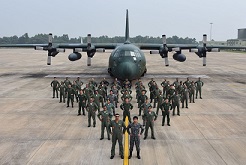





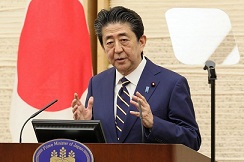




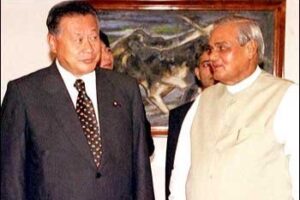





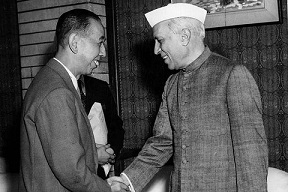










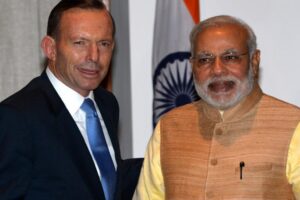





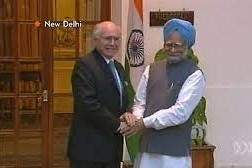








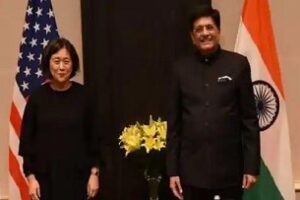
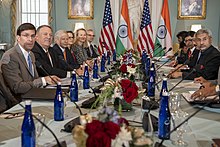



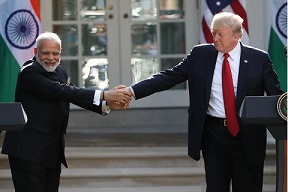
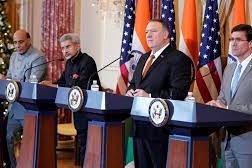

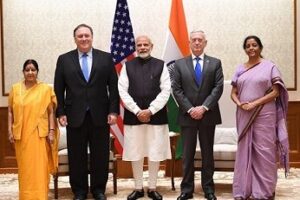
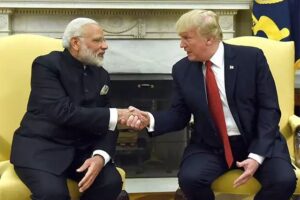
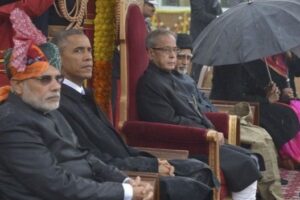

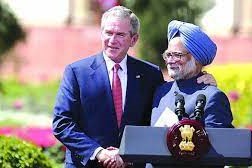
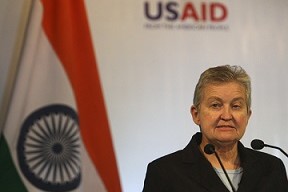
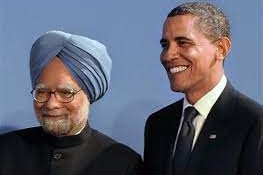


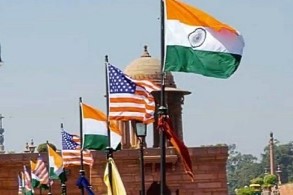
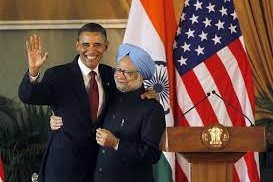



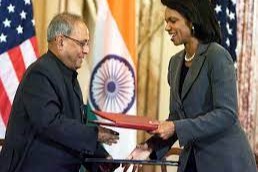

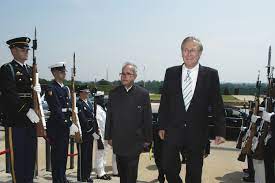




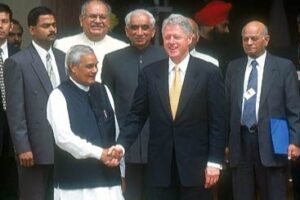


 onducted a total of five underground nuclear tests, breaking a 24-year self-imposed moratorium on nuclear testing. Pakistan followed, claiming 5 tests on May 28, 1998, and an additional test on May 30. The unannounced tests created a global storm of criticism, as well as a serious setback for decades of U.S. nuclear nonproliferation efforts in South Asia. On May 13, 1998, President Clinton imposed economic and military sanctions on India, mandated by Section 102 of the Arms Export Control Act (AECA), and applied the same sanctions to Pakistan on May 30. Some effects of the sanctions on India included: termination of $21 million in FY1998 economic development assistance; postponement of $1.7 billion in lending by the International Financial Institutions (IFI), as supported by the Group of Eight (G-8) leading industrial nations; prohibition on loans or credit from U.S. banks to the government of India; and termination of Foreign Military Sales under the Arms Export Control Act. Humanitarian assistance, food, or other agricultural commodities are excepted from sanctions under the law.
onducted a total of five underground nuclear tests, breaking a 24-year self-imposed moratorium on nuclear testing. Pakistan followed, claiming 5 tests on May 28, 1998, and an additional test on May 30. The unannounced tests created a global storm of criticism, as well as a serious setback for decades of U.S. nuclear nonproliferation efforts in South Asia. On May 13, 1998, President Clinton imposed economic and military sanctions on India, mandated by Section 102 of the Arms Export Control Act (AECA), and applied the same sanctions to Pakistan on May 30. Some effects of the sanctions on India included: termination of $21 million in FY1998 economic development assistance; postponement of $1.7 billion in lending by the International Financial Institutions (IFI), as supported by the Group of Eight (G-8) leading industrial nations; prohibition on loans or credit from U.S. banks to the government of India; and termination of Foreign Military Sales under the Arms Export Control Act. Humanitarian assistance, food, or other agricultural commodities are excepted from sanctions under the law. 







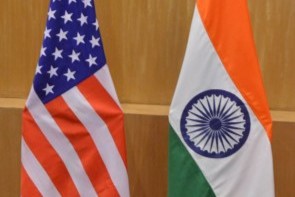

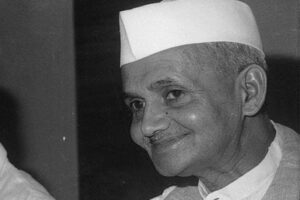





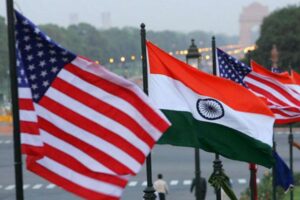
 The first ministerial level meeting of QUAD was held on the sidelines of the United Nations General Assembly in New York. Before this, the QUAD had
The first ministerial level meeting of QUAD was held on the sidelines of the United Nations General Assembly in New York. Before this, the QUAD had AusIndEx is an exercise between India and Australia which was first held in 2015.The Australian
AusIndEx is an exercise between India and Australia which was first held in 2015.The Australian 







 On recommendations of the Japanese government, the four countries met at Manila, Philippines for ASEAN Regional Forum (ARF) originally, but also ended up having a meeting of what we call the first meeting of four nation states on issues of
On recommendations of the Japanese government, the four countries met at Manila, Philippines for ASEAN Regional Forum (ARF) originally, but also ended up having a meeting of what we call the first meeting of four nation states on issues of  On his official visit to India, Japanese PM Mr. Shinzo Abe reinforced the ties of two nations, i.e., Japan and India with his famous speech about
On his official visit to India, Japanese PM Mr. Shinzo Abe reinforced the ties of two nations, i.e., Japan and India with his famous speech about  In 2007, Japanese President Shinzo Abe resigned from his post citing health reasons. This had a significant impact on QUAD as he was the architect & advocate of QUAD. His successor, Yasuo Fukuda, did not take up QUAD with such zeal leading to dormancy of the forum. (
In 2007, Japanese President Shinzo Abe resigned from his post citing health reasons. This had a significant impact on QUAD as he was the architect & advocate of QUAD. His successor, Yasuo Fukuda, did not take up QUAD with such zeal leading to dormancy of the forum. ( Japan earthquake and tsunami of 2011, also called Great Sendai Earthquake or Great Tōhoku Earthquake, was a 9.0 magnitude earthquake which struck below the floor of the Western Pacific at 2:49 PM. The powerful earthquake affected the northeastern coast of Honshu, Japan’s main island, and also initiated a series of large tsunami waves that devastated coastal areas of Japan, which also led to a major nuclear accident. Japan received aid from India, US, Australia as well as other countries. US Navy aircraft carrier was dispatched to the area and Australia sent search-and-rescue teams.
Japan earthquake and tsunami of 2011, also called Great Sendai Earthquake or Great Tōhoku Earthquake, was a 9.0 magnitude earthquake which struck below the floor of the Western Pacific at 2:49 PM. The powerful earthquake affected the northeastern coast of Honshu, Japan’s main island, and also initiated a series of large tsunami waves that devastated coastal areas of Japan, which also led to a major nuclear accident. Japan received aid from India, US, Australia as well as other countries. US Navy aircraft carrier was dispatched to the area and Australia sent search-and-rescue teams.  India and Australia signed the
India and Australia signed the  The India-Japan Agreement for Cooperation in the Peaceful Uses of Nuclear Energy was signed on 11 November, 2016 and came into force on 20 July, 2017 which was representative of strengthening ties between India and Japan. Diplomatic notes were exchanged between Dr. S. Jaishankar and H.E. Mr. Kenji Hiramatsu, Ambassador of Japan to India. (
The India-Japan Agreement for Cooperation in the Peaceful Uses of Nuclear Energy was signed on 11 November, 2016 and came into force on 20 July, 2017 which was representative of strengthening ties between India and Japan. Diplomatic notes were exchanged between Dr. S. Jaishankar and H.E. Mr. Kenji Hiramatsu, Ambassador of Japan to India. ( The foreign ministry
The foreign ministry The Officials of QUAD member countries met in Singapore on November 15, 2018 for consultation on regional & global issues of common interest. The main discussion revolved around connectivity, sustainable development, counter-terrorism, maritime and cyber security, with the view to promote peace, stability and prosperity in the
The Officials of QUAD member countries met in Singapore on November 15, 2018 for consultation on regional & global issues of common interest. The main discussion revolved around connectivity, sustainable development, counter-terrorism, maritime and cyber security, with the view to promote peace, stability and prosperity in the  The 23rd edition of trilateral Malabar maritime exercise between India, US and Japan took place on 26 September- 04 October, 2019 off the coast of Japan.
The 23rd edition of trilateral Malabar maritime exercise between India, US and Japan took place on 26 September- 04 October, 2019 off the coast of Japan.  After the first ministerial level meeting of QUAD in September, 2019, the senior officials of US, Japan, India and Australia again met for consultations in Bangkok on the margins of the East Asia Summit. Statements were issued separately by the four countries. Indian Ministry of External Affairs said “In statements issued separately by the four countries, MEA said, “proceeding from the strategic guidance of their Ministers, who met in New York City on the sidelines of the UN General Assembly recently, the officials exchanged views on ongoing and additional practical cooperation in the areas of connectivity and infrastructure development, and security matters, including counterterrorism, cyber and maritime security, with a view to promoting peace, security, stability, prosperity in the Indo-Pacific region.”
After the first ministerial level meeting of QUAD in September, 2019, the senior officials of US, Japan, India and Australia again met for consultations in Bangkok on the margins of the East Asia Summit. Statements were issued separately by the four countries. Indian Ministry of External Affairs said “In statements issued separately by the four countries, MEA said, “proceeding from the strategic guidance of their Ministers, who met in New York City on the sidelines of the UN General Assembly recently, the officials exchanged views on ongoing and additional practical cooperation in the areas of connectivity and infrastructure development, and security matters, including counterterrorism, cyber and maritime security, with a view to promoting peace, security, stability, prosperity in the Indo-Pacific region.” US 2+2 Ministerial Dialogue was held on 18 December, 2019, in Washington DC. Secretary of State Michael R. Pompeo and Secretary of Defense Mark T. Esper will host Indian Minister of External Affairs Dr. S. Jaishankar and Minister of Defense Shri Rajnath Singh. The discussion focussed on deepening bilateral strategic and defense cooperation, exchanging perspectives on global developments, and our shared leadership in the Indo-Pacific region.The two democracies signed the Industrial Security Annex before the 2+2 Dialogue. Assessments of the situation in Afghanistan, Pakistan, Nepal, Sri Lanka, and the Indian Ocean region in general were shared between both countries. (
US 2+2 Ministerial Dialogue was held on 18 December, 2019, in Washington DC. Secretary of State Michael R. Pompeo and Secretary of Defense Mark T. Esper will host Indian Minister of External Affairs Dr. S. Jaishankar and Minister of Defense Shri Rajnath Singh. The discussion focussed on deepening bilateral strategic and defense cooperation, exchanging perspectives on global developments, and our shared leadership in the Indo-Pacific region.The two democracies signed the Industrial Security Annex before the 2+2 Dialogue. Assessments of the situation in Afghanistan, Pakistan, Nepal, Sri Lanka, and the Indian Ocean region in general were shared between both countries. ( The foreign ministers of QUAD continued their discussions from the last ministerial level meeting in 2019, on 6 October, 2020. While there was no joint statement released, all countries issued individual readouts. As per the issue readout by India, the discussion called for a coordinated response to the challenges including financial problems emanating from the pandemic, best practices to combat Covid-19, increasing the resilience of supply chains, and enhancing access to affordable vaccines, medicines and medical equipment. There was also a focus on maintaining stability in the Indo-Pacific region amidst growing tensions. Australian media release mentions “We emphasised that, especially during a pandemic, it was vital that states work to ease tensions and avoid exacerbating long-standing disputes, work to counter disinformation, and refrain from malicious cyberspace activity. Ministers reiterated that states cannot assert maritime claims that are inconsistent with international law, particularly the United Nations Convention on the Law of the Sea (UNCLOS).”
The foreign ministers of QUAD continued their discussions from the last ministerial level meeting in 2019, on 6 October, 2020. While there was no joint statement released, all countries issued individual readouts. As per the issue readout by India, the discussion called for a coordinated response to the challenges including financial problems emanating from the pandemic, best practices to combat Covid-19, increasing the resilience of supply chains, and enhancing access to affordable vaccines, medicines and medical equipment. There was also a focus on maintaining stability in the Indo-Pacific region amidst growing tensions. Australian media release mentions “We emphasised that, especially during a pandemic, it was vital that states work to ease tensions and avoid exacerbating long-standing disputes, work to counter disinformation, and refrain from malicious cyberspace activity. Ministers reiterated that states cannot assert maritime claims that are inconsistent with international law, particularly the United Nations Convention on the Law of the Sea (UNCLOS).” On September 24, President Biden hosted Prime Minister Scott Morrison of Australia, Prime Minister Narendra Modi of India, and Prime Minister Yoshihide Suga of Japan at the White House for the first-ever in-person Leaders’ Summit of the QUAD. The leaders released a Joint Statement which summarised their dialogue and future course of action. The regional security of the Indo-Pacific and strong confidence in the ASEAN remained on the focus along with response to the Pandemic.
On September 24, President Biden hosted Prime Minister Scott Morrison of Australia, Prime Minister Narendra Modi of India, and Prime Minister Yoshihide Suga of Japan at the White House for the first-ever in-person Leaders’ Summit of the QUAD. The leaders released a Joint Statement which summarised their dialogue and future course of action. The regional security of the Indo-Pacific and strong confidence in the ASEAN remained on the focus along with response to the Pandemic.  The QUAD Vaccine Partnership was announced at the first QUAD Summit on 12 March 2021 where QUAD countries agreed to deliver 1.2 billion vaccine doses globally. The aim was to expand and finance vaccine manufacturing and equipping the Indo-Pacific to build resilience against Covid-19. The launch of a senior-level QUAD Vaccine Experts Group, comprised of top scientists and officials from all QUAD member governments was also spearheaded.
The QUAD Vaccine Partnership was announced at the first QUAD Summit on 12 March 2021 where QUAD countries agreed to deliver 1.2 billion vaccine doses globally. The aim was to expand and finance vaccine manufacturing and equipping the Indo-Pacific to build resilience against Covid-19. The launch of a senior-level QUAD Vaccine Experts Group, comprised of top scientists and officials from all QUAD member governments was also spearheaded.  Although the Tsunami Core group had to be disbanded on fulfilment of its purpose, however the quadrilateral template that formed remained intact as a successful scaffolding of four countries, as stated by authors Patrick Gerard Buchan and Benjamin Rimland in their diplomatic brief about QUAD ( you can access the brief at
Although the Tsunami Core group had to be disbanded on fulfilment of its purpose, however the quadrilateral template that formed remained intact as a successful scaffolding of four countries, as stated by authors Patrick Gerard Buchan and Benjamin Rimland in their diplomatic brief about QUAD ( you can access the brief at  Secretary of State Colin Powell stated that the Core Tsunami Group was to be disbanded and folded and clubbed with the broader United Nations led Relief Operations. In a Tsunami Relief Conference in Jakarta, Secretary Powell stated that
Secretary of State Colin Powell stated that the Core Tsunami Group was to be disbanded and folded and clubbed with the broader United Nations led Relief Operations. In a Tsunami Relief Conference in Jakarta, Secretary Powell stated that  Soon after the Earthquake and Tsunami crisis, humanitarian reliefs by countries, viz., US, India, Japan, and Australia started to help the 13 havoc-stricken countries. The US initially promised $ 35 Millions in aid. However, on 29
Soon after the Earthquake and Tsunami crisis, humanitarian reliefs by countries, viz., US, India, Japan, and Australia started to help the 13 havoc-stricken countries. The US initially promised $ 35 Millions in aid. However, on 29 At 7:59AM local time, an earthquake of 9.1 magnitude (undersea) hit the coast of Sumatra, an Indonesian island. As a result of the same, massive waves of Tsunami triggered by the earthquake wreaked havoc for 7 hours across the Indian Ocean and to the coastal areas as far away as East Africa. The infamous Tsunami killed around 225,000 people, with people reporting the height of waves to be as high as 9 metres, i.e., 30 feet. Indonesia, Srilanka, India, Maldives, Thailand sustained horrendously massive damage, with the death toll exceeding 200,000 in Northern Sumatra’s Ache province alone. A great many people, i.e., around tens of thousands were found dead or missing in Srilanka and India, mostly from Andaman and Nicobar Islands of Indian territory. Maldives, being a low-lying country, also reported casualties in hundreds and more, with several non-Asian tourists reported dead or missing who were vacationing. Lack of food, water, medicines burgeoned the numbers of casualties, with the relief workers finding it difficult to reach the remotest areas where roads were destroyed or civil war raged. Long-term environmental damage ensued too, as both natural and man-made resources got demolished and diminished.
At 7:59AM local time, an earthquake of 9.1 magnitude (undersea) hit the coast of Sumatra, an Indonesian island. As a result of the same, massive waves of Tsunami triggered by the earthquake wreaked havoc for 7 hours across the Indian Ocean and to the coastal areas as far away as East Africa. The infamous Tsunami killed around 225,000 people, with people reporting the height of waves to be as high as 9 metres, i.e., 30 feet. Indonesia, Srilanka, India, Maldives, Thailand sustained horrendously massive damage, with the death toll exceeding 200,000 in Northern Sumatra’s Ache province alone. A great many people, i.e., around tens of thousands were found dead or missing in Srilanka and India, mostly from Andaman and Nicobar Islands of Indian territory. Maldives, being a low-lying country, also reported casualties in hundreds and more, with several non-Asian tourists reported dead or missing who were vacationing. Lack of food, water, medicines burgeoned the numbers of casualties, with the relief workers finding it difficult to reach the remotest areas where roads were destroyed or civil war raged. Long-term environmental damage ensued too, as both natural and man-made resources got demolished and diminished.
No responses yet